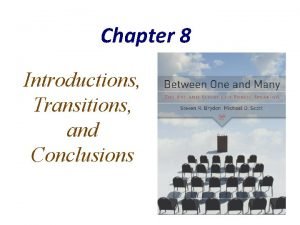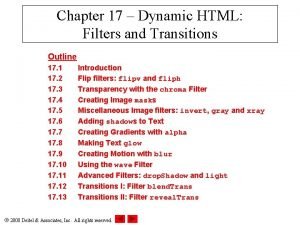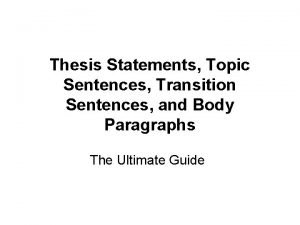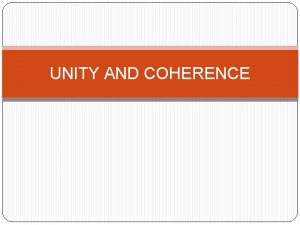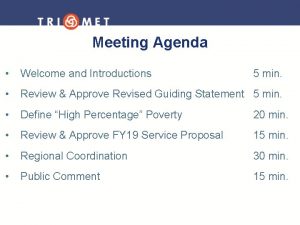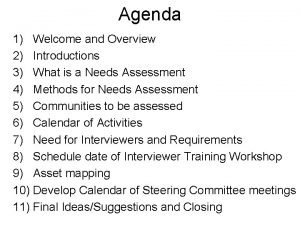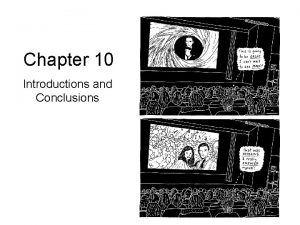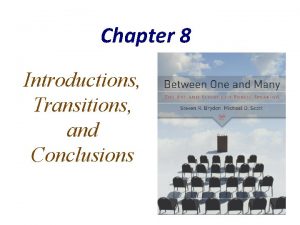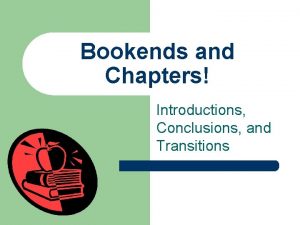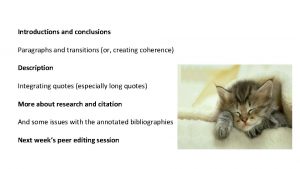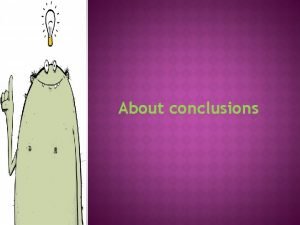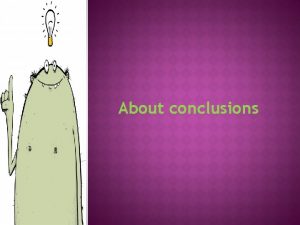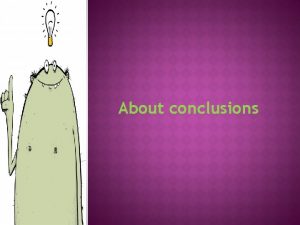Chapter 8 Introductions Transitions and Conclusions What We










- Slides: 10

Chapter 8 Introductions, Transitions, and Conclusions

What We Will Discuss • Importance of Intros and Conclusions • Elements of an effective introduction • Types of transitions • Elements of an effective conclusion

Why are Intros and Conclusions Important? • • Primacy-recency effect • Remember or most influenced by • What you hear at the beginning • Or end of speech Take into account the rhetorical situation 3

What Makes an Effective Intro? 1. Open with Impact 2. Focus on Thesis Statement 3. Connect With Your Audience 4. Preview Your Speech 4

What Makes an Effective Intro? 1. Open with Impact 1. Is there anything wrong with saying, “Today I’m going to talk about…”? 2. Stories 3. Humor 4. Refer to rhetorical situation 5. Aphorisms, proverbs and quotations 6. Posing a question or series of questions 7. Startling statements 5

What Makes an Effective Intro? 2. Focus on Thesis Statement 1. 2. “Today I’m going to talk about…” What’s the point of your speech? 3. Connect With Your Audience 1. 2. Make a personal connection. How? Connect content of speech with audience members 6

What Makes an Effective Intro? 4. Preview Your Speech 1. 2. 3. 4. Enables audience to recognize early on the most important parts of speech P. 184 discusses a clear, yet not particularly engaging preview… “My first main point is…my second point…, and my final point is…” How might you preview your points in an interesting manner? 7

Types of Transitions 1. Internal summaries 1. The longer a speech goes… the more necessary for internal summaries 2. Connections 1. 2. Connect parts of the speech Intro, body conclusion 3. Speech progression 1. 2. Tells audience we are leaving one part of speech and beginning another This is what we do with our signposts 8

What Makes an Effective Conclusion? 1. Respect your time limit 1. Should take approx. same amount of time as intro 2. Briefly summarize most important points 1. Clear, concise, without embellishment 3. Close with impact 1. 2. 3. 4. 5. Story Aphorism, proverb, quotation Reference to rhetorical situation Return to opening Call to action 9

Summary • Importance of Intros and Conclusions • Elements of an effective introduction • Types of transitions • Elements of an effective conclusion
 Transitions for conclusions
Transitions for conclusions Vertical blinds
Vertical blinds Transition thesis statements
Transition thesis statements Coherence unity
Coherence unity Meeting agenda welcome and introductions
Meeting agenda welcome and introductions Agenda welcome and introductions
Agenda welcome and introductions German family vocabulary
German family vocabulary Agenda welcome and introductions
Agenda welcome and introductions Agenda welcome and introductions
Agenda welcome and introductions Agenda welcome and introductions
Agenda welcome and introductions Agenda welcome and introductions
Agenda welcome and introductions
